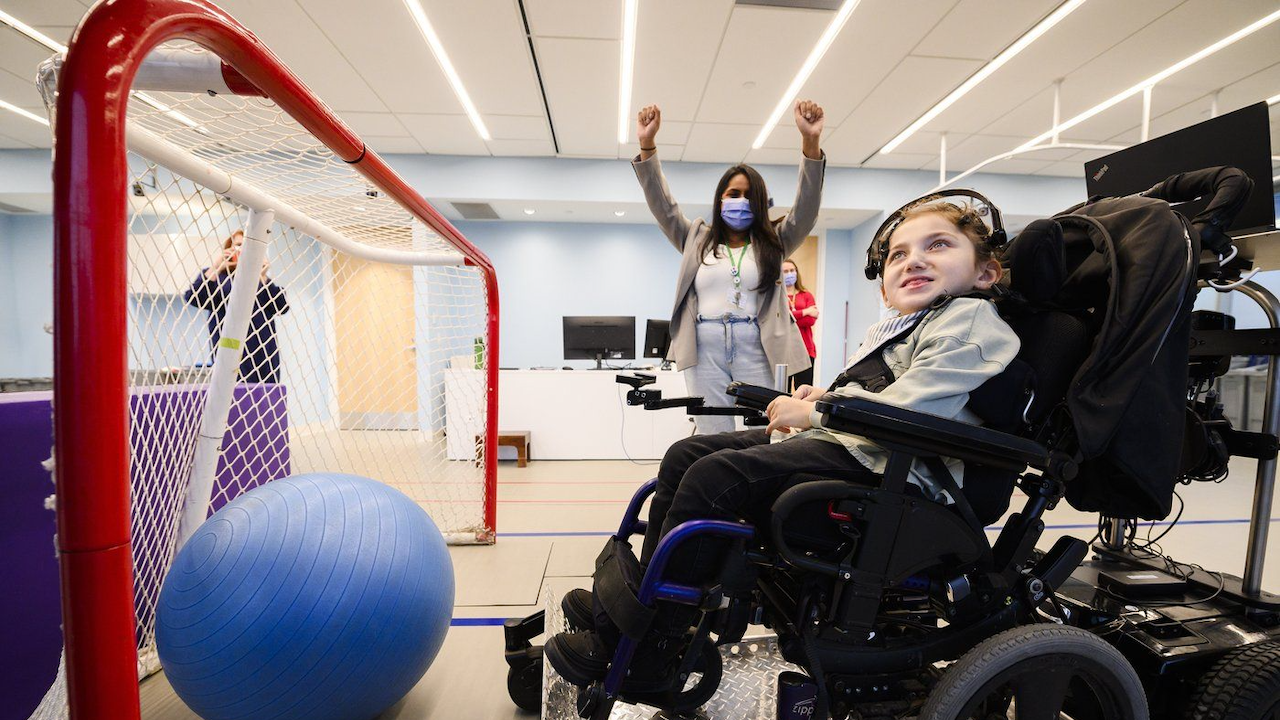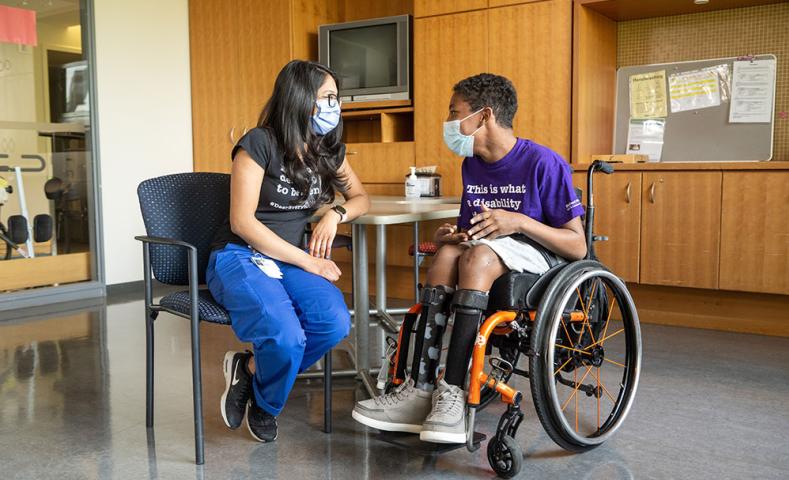Windsor, Ontario, is home to an incredible technology that is changing the lives of children with disabilities. A brain-computer headset, developed by Holland Bloorview Kids Rehabilitation Hospital, is now being used at the McGivney Children’s Centre to assist children with limited mobility and communication abilities.
The device, known as the Skil Wizard, works by detecting and measuring brain activity. This information is then translated into commands that can be used to control a computer. This revolutionary technology has had a significant impact on the children who use it, allowing them to interact with their environment and express themselves in ways they never could before.
Nicole Ireland By
TORONTO (CNN) – Eight-year-old Giselle Alnaser desires to have the Elmo stuffed toy resting on a stool across the room, so she is going to employ brain waves to have it.
and her mother cheers her with,”let us go, let us go, let us go!” Giselle focuses her attention when the platform on which she is sitting on her wheelchair seems to move automatically towards Elmo. Upon her arrival on the stool, and as an occupational therapist offers her the toy to play, she smiles.
The case of Giselle presents a situation in which she developed a CAMK2b gene mutation at the toddler stage. It also happens to her brain to communicate to her muscles that is, she cannot walk nor move her arms too much and indeed her ability to speak is also deprived.
The Brain Computer Interface program at Holland Bloorview Kids rehabilitation hospital in Toronto is coming up with technology that can enable Giselle among many of such disabled children in the nation to control their movements and play with their minds.
It is, “[those children who] cannot locate themselves in space, [and] those children who lack an assured locomotion, lack verbal communication or have some sort of problem in some verbal communication.” Their only means of interaction to the environment then is through their thoughts as explained by Susannah Van Damme who is an occupational therapist and the team lead of the clinical BCI program at the hospital.
The brain computer interface operates as a switch on-off which is activated by electrical wave patterns in the brain. When wearing a set of headsets with EEG electrodes the child is asked to just think of something specific that will be used as a command thought. This is followed by requesting the child to relax and putting his or her mind in silence, passive mode which is the stop thought.
Those electrical signals are transmitted to a computer which saves it using the help of the electrodes. The computer is taught artificial intelligence into realizing those very same brain patterns when it sees them in the future and trigger or turn off whatever, in this case, is giselles rolling wheelchair platform.
You can sort of flick the switch and control the activity as long as one can generate activity in the brain, said Tom Chau, senior scientist and head of Holland Bloorview in the Paediatric Rehabilitation Intelligent Systems Multidisciplinary lab.
By dwelling on fast movement using her wheelchair or uttering the words go, go, go, Giselle produces a thought, which she describes as the command thought.
No mind is needed, though. The trick is that the child should focus on this and the computer registers an electrical pattern of the brain response emerging.
And when child wants to make something happen, they will think the same thing and that will create the same pattern on the brain which the computer will already recognize.
When the child sends that go signal the computer would read that as a go signal too to go start or fire up whatever it is that it connects to, Van Damme stated.
In another exercise, the team will connect the computer to a bubble maker. thoughts The same command thoughts that help Giselle move her wheelchair is now the same thought that causes her to make bubbles.
Under a game called freeze, the computer is put to play when she believes that she has thought a command. When the Barney dance song is played, Giselle switches the music off and on since her mom and hospital staff members are dancing around her. Giselle smiles delightedly when she turns off the music leaving them frozen in their tracks.
Having not been able to switch on his favourite music or even play a video game due to lack of physical ability; Van Damme says, the person would be able to use his/her brain power to do so.
Every parent simply wants the kids to have no intimacy and get their own way … to go, to play, to learn and all, said Alnaser.
Be herself. To be a child.”
Even though BCI research has been going on in different parts of the globe over the past decades, in recent years, Canada network has been on the fore front in making the technology available to children and young people with disabilities representing Holland Bloorview, Alberta Children Hospital in Calgary and Glenrose Rehabilitation Hospital in Edmonton.
“As a collective group of clinicians working with children and families, one thing in common was that in spite of the fact that those BCI technologies are advancing very fast, the pediatrics were very much lacking in them, said Dr. John Andersen, University of Alberta associate professor of pediatrics who spearheads the BCI program at Glenrose.
“Andersen said the goal was to see how they could make this available to children and learn both off them and their families on how this emerging tech can be accessible in its current state and develop the expertise and technology around it in the future, adding Chau in Holland Bloorview has been the leader on the group.
Though the on-off switch activities enable the children and youth suffering neuromotor disability to have more control in their lives, the researchers found it the next big thing to develop BCI technology to enable the non-verbal children to communicate since their parents insist it is a major priority.
“We have made a research study that has been going on, you know, twenty years in the area of communication. We are making it to a point where you can be able to translate it, said Chau.
That would open up tremendous possibilities to children who are basically stuck in their own bodies, Chau said.
“There is so much that they would like to give out. And it merely has never been the means.”
“They have so much that they want to express. And there’s just never been the means.”
The Canadian Press first published this report February 20, 2024.
The Canadian Press health coverage is assisted through a relation with the Canadian Medical Association. No other person or entity is liable to this content, except CP.




































